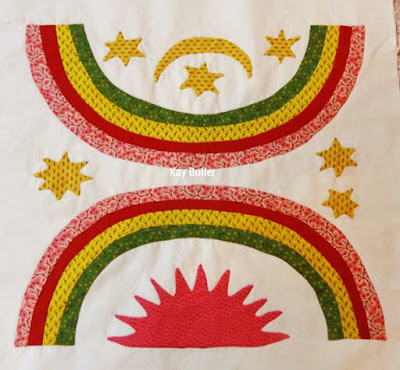Here's a pattern without a name or a number. I hadn't seen it published
when I wrote my Encyclopedia of Pieced Quilt Patterns years ago.
And I probably didn't even notice it....
Classifying it with regular old Star of Bethlehem quilts.
Here's a 1993 ad for a spectacular version.
UPDATE: This quilt is in the collection of the International Quilt
Study Center & Museum.
#2009.039.0042
Better picture.
The center is negative space...
A place to put another design.
In case one thought there wasn't enough pattern.
Online auction, now in Arlene Arnold's collection.
Those that I am showing look to be middle of the 19th century.
And those I have on file all have appliqued centers.
I suppose you could put a different pieced design in there too.
Here's one of the great examples attributed to Pearl Pryor Millsap in 1932 by her family when interviewed by the California project. See it in their book Ho! For California. But the more I look at this one the more I think it was made before Pearl was born in 1883. The fabrics, style, border and quilting all say 1840-1870
UPDATE: Looking at the California quilt even closer makes me wonder how somebody
would have obtained solid pastel purple fabric in the 19th century. I take it all back.
Pearl probably did make that in 1932.
I'm calling the hollow star unnamed and giving it a BlockBase number 4005.9
UPDATE: Debby Cooney comments:
"Guessing [the America Hurrah example] is a Montgomery County, Md. Mathematical Star. The applique, esp. the Morning Glories, are almost identical to those in two Mont. Co. quilts at the Balto. Museum of Art, another quilt in a Md. private collection, and blocks in Polly Mello's collection."
I'll see if I can find pictures to add.






















































